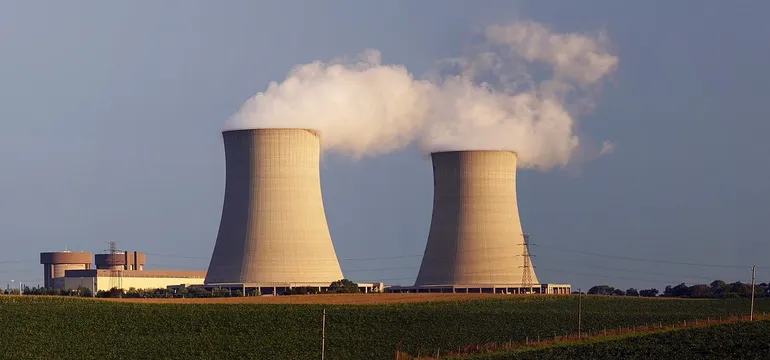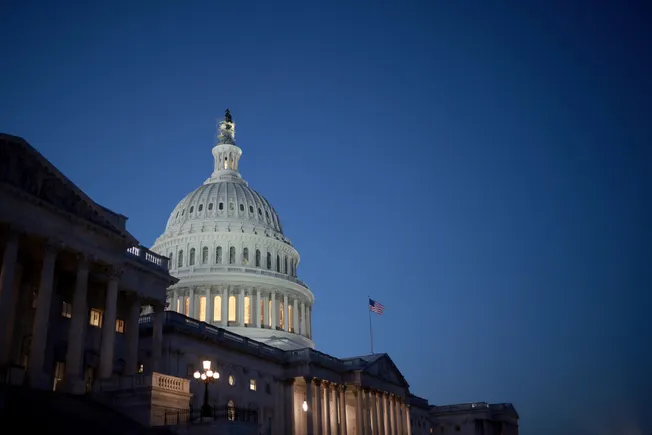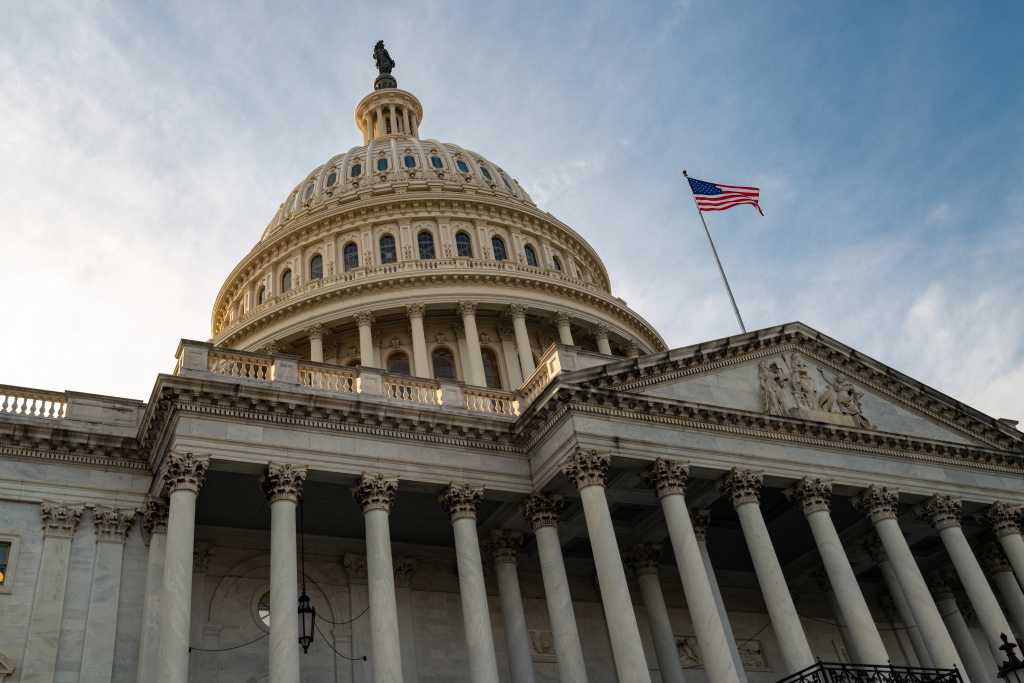
WASHINGTON — The U.S. Department of Energy (DOE) today announced three new policy actions that are projected to save more than $935 million annually for the American taxpayer, while expanding American innovation and scientific research. In three new policy memorandums, the DOE announced that it will follow best practices used by fellow grant providers and limit “indirect costs” of DOE funding to 10% for state and local governments, 15% for non-profit organizations, and 15% for for-profit companies.
The Energy Department expects to generate over $935 million in annual cost savings for the American people, delivering on President Trump’s commitment to bring greater transparency and efficiency to federal government spending. Estimated savings are based on applying the new policies to 2024 fiscal year spending.
“This action ensures that Department of Energy funds are supporting state, local, for-profit and non-profit initiatives that make energy more affordable and secure for Americans, not funding administrative costs,” U.S. Secretary of Energy Chris Wright said. “By aligning our policy on indirect costs with industry standards, we are increasing accountability of taxpayer dollars and ensuring the American people are getting the greatest value possible from these DOE programs.”
These policy actions follow an announcement made in April to limit financial support of “indirect costs” of DOE research funding at colleges and universities to 15%, saving an estimated additional $405 million annually.
By enacting indirect cost limits, the Department aligns its practices with those common for other grant providers.
The full three memorandums are available below:
POLICY FLASH
SUBJECT: Adjusting Department of Energy Financial Assistance Policy for State and Local Governments’ Financial Assistance Awards
BACKGROUND: Pursuant to 5 U.S.C. 553(a)(2), the Department of Energy (“Department”) is updating its policy with respect to Department financial assistance funding awarded to state and local governments.
Through its financial assistance programs (which include grants and cooperative agreements), the Department funds research, development, and deployment projects and activities in furtherance of its mission consistent with its policies and priorities. A portion of the funding provided pursuant to a DOE financial assistance agreement (“Award”) goes to “indirect costs,” sometimes referred to as facilities and administration (F&A) costs. Facilities costs can sometimes be comprised of such things as depreciation of buildings, rent, equipment, capital improvements, and other operations and maintenance expenses, while administration costs can include such things as general expenses for administrative salaries and fringe benefits such as insurance and paid time off, accounting, office supplies, payroll, and other general administration costs.
While the Department is aware that many Award recipients use indirect cost payments to effectuate activities funded by the Department’s financial assistance awards, these indirect cost payments are not for funding the Department’s direct project activities. As these funds are entrusted to the Department by the American people, the Department must ensure it is putting funds to appropriate use on financial assistance programs. To improve efficiency and curtail costs where appropriate, the Department seeks to better balance the financial needs of financial assistance award recipients with the Department’s obligation to responsibly manage federal funds.
Accordingly, this policy flash announces the Department’s updated policies, procedures, and general decision-making criteria for establishing standards (and limits) for payment of indirect costs related to financial assistance awarded to state and local governments. When awarding financial assistance to state and local governments these policies, procedures, and criteria are intended to better balance the Department’s dual responsibilities to financial assistance award recipients and the American people.
Effective immediately, this guidance only applies to new or conditional Awards with state and local governments. New Awards are considered to be Awards issued under Notices of Funding Opportunity yet to be released. Conditional Awards are awards for prior Notices of Funding Opportunity or Funding Opportunity Announcements where negotiations are not yet complete and/or the Award has not been executed. This guidance does not apply to tribal entities.
ESTABLISHING APPROPRIATE INDIRECT COST REIMBURSEMENT LIMITS:
At present, the indirect cost rate for state and local government financial assistance Awards is typically negotiated by one of nine other Federal agencies, depending on the state and local governmental entity involved, see 2 C.F.R. 200, app. V(F)(1). The Department plans to establish a new policy on the payment of indirect costs under Awards to state and local governments. The Department plans to establish a maximum allowable dollar amount (stated in terms of a percentage of the total project award amount) that it will reimburse for allowable, allocable, and reasonable indirect costs under Awards. The percentage that will be reimbursable is inclusive of total indirect costs and fringe benefit costs.
For the reasons set forth in this memorandum, for New Awards, recipients should continue to utilize their negotiated and approved indirect cost rate(s) in applications for Awards, but the Department will establish a maximum dollar amount that it will reimburse under Awards to state and local governments. The maximum limit of funds to be paid or reimbursed to a new Award recipient as indirect costs will be calculated as a percentage of the total project award amount and will be included in the Award terms as a cap. For state and local government financial assistance awards, this maximum percentage is 10 percent (10%).
All New Awards to state and local governments will mandate that the Department will limit the payment or reimbursement of all allowable, allocable, and reasonable indirect costs to a maximum of ten percent (10%) of the total project award amount. This policy will better balance the Department’s twin aims of funding meaningful financial assistance programs to stimulate a public purpose, such as improved infrastructure or technology deployment, and upholding its fiduciary Federal Stewardship obligations to the American people.
In circumstances where the Secretary has determined it is necessary and appropriate, the dollar threshold for reimbursement of indirect costs may be modified for Award(s) to state and local governments that are subject to this policy.
Additional information is forthcoming.
POLICY FLASH
SUBJECT: Adjusting Department of Energy Financial Assistance Policy for Non-profit Organizations’ Financial Assistance Awards
BACKGROUND: Pursuant to 5 U.S.C. 553(a)(2), the Department of Energy (“Department”) is updating its policy with respect to Department financial assistance funding awarded to nonprofit organizations.
Through its financial assistance programs (which include grants and cooperative agreements), the Department funds research, development, and deployment projects and activities in furtherance of its mission consistent with its policies and priorities. A portion of the funding provided pursuant to a Department financial assistance agreement (“Award”) goes to “indirect costs,” sometimes referred to as facilities and administration (“F&A”) costs. Facilities costs can sometimes be comprised of such things as depreciation of buildings, rent, equipment, capital improvements, and other operations and maintenance expenses, while administration costs can include such things as general expenses for administrative salaries and fringe benefits such as insurance and paid time off, accounting, office supplies, payroll, and other general administration costs.
While the Department is aware that many Award recipients use indirect cost payments to effectuate activities funded by the Department’s financial assistance awards, these indirect cost payments are not for funding the Department’s direct project activities. As these funds are entrusted to the Department by the American people, the Department must ensure it is putting funds to appropriate use on financial assistance programs. To improve efficiency and curtail costs where appropriate, the Department seeks to better balance the financial needs of financial assistance award recipients with the Department’s obligation to responsibly manage federal funds.
Accordingly, this policy flash announces the Department’s updated policies, procedures, and general decision-making criteria for establishing standards (and limits) for payment of indirect costs related to financial assistance awarded to nonprofit organizations. When awarding financial assistance to nonprofit organizations these policies, procedures, and criteria are intended to better balance the Department’s dual responsibilities to Award recipients and the American people.
Effective immediately, this guidance only applies to new or conditional Awards with nonprofit organizations. New Awards are considered to be Awards issued under Notices of Funding Opportunity yet to be released. Conditional Awards are awards for prior Notices of Funding Opportunity or Funding Opportunity Announcements where negotiations are not yet complete and/or the Award has not been executed.
ESTABLISHING APPROPRIATE INDIRECT COST REIMBURSEMENT LIMITS:
At present, the indirect cost rate for nonprofit organization Awards is typically negotiated by the Federal agency with the largest dollar value of Federal awards directly funded to the nonprofit organization, see 2 C.F.R. 200, app. IV(C)(2)(a). The Department plans to establish a new policy on the payment of indirect costs under Awards to nonprofit organizations. The Department plans to establish a maximum allowable dollar amount (stated in terms of a percentage of the total project award amount) that it will reimburse for allowable, allocable, and reasonable indirect costs under Awards. The percentage that will be reimbursable is inclusive of total indirect costs and fringe benefit costs.
For the reasons set forth in this memorandum, for New Awards, recipients should continue to utilize their negotiated and approved indirect cost rate(s) in applications for Awards, but the Department will establish a maximum dollar amount that it will reimburse under Awards to nonprofit organizations. The maximum limit of funds to be paid or reimbursed to a new Award recipient as indirect costs will be calculated as a percentage of the total project award amount and will be included in the Award terms as a cap. For nonprofit organization Awards, this maximum percentage is 15 percent (15%).
All New Awards to nonprofit organizations will mandate that the Department will limit the payment or reimbursement of all allowable, allocable, and reasonable indirect costs to a maximum of fifteen percent (15%) of the total project award amount. This policy will better balance the Department’s twin aims of funding meaningful financial assistance programs to stimulate a public purpose, such as improved infrastructure or technology deployment, and upholding its fiduciary Federal Stewardship obligations to the American people.
In circumstances where the Secretary has determined it is necessary and appropriate, the dollar threshold for payment of indirect costs may be modified for Award(s) to nonprofit organizations that are subject to this policy.
Additional information is forthcoming.
POLICY FLASH
SUBJECT: Adjusting Department of Energy Financial Assistance Policy for For-profit Organizations’ Financial Assistance Awards
BACKGROUND: Pursuant to 5 U.S.C. 553(a)(2), the Department of Energy (“Department”) is updating its policy with respect to Department financial assistance funding awarded to for-profit organizations.
Through its financial assistance programs (which include grants and cooperative agreements), the Department funds research, development, and deployment projects and activities in furtherance of its mission consistent with its policies and priorities. A portion of the funding provided pursuant to a Department financial assistance agreement (“Award”) goes to “indirect costs.”. Indirect costs can be comprised of one or more indirect pools to include fringe pools associated with employee benefits, overhead pools that support business operations, and general and administrative (G&A) pools associated with the overall administration of a business. These indirect pools typically may include costs for health insurance, paid leave, payroll taxes, rent, utilities, professional services, IT, supplies, executive salaries, rent, training, licenses and permits, depreciation, and other general expenses not directly tied to a specific project.
While the Department is aware that many Award recipients use indirect cost payments to effectuate activities funded by the Department’s financial assistance awards, these indirect cost payments are not for funding the Department’s direct project activities. As these funds are entrusted to the Department by the American people, the Department must ensure it is putting funds to appropriate use on financial assistance programs. To improve efficiency and curtail costs where appropriate, the Department seeks to better balance the financial needs of financial assistance award recipients with the Department’s obligation to responsibly manage federal funds.
Accordingly, this policy flash announces the Department’s updated policies, procedures, and general decision-making criteria for establishing standards (and limits) for payment of indirect costs related to financial assistance awarded to for-profit organizations, as defined by 2 C.F.R. Part 910.122. When awarding financial assistance to for-profit organizations these policies, procedures, and criteria are intended to better balance the Department’s dual responsibilities to Award recipients and the American people.
Effective immediately, this guidance only applies to new or conditional Awards with for-profit organizations. New Awards are considered to be Awards issued under Notices of Funding Opportunity yet to be released. Conditional Awards are awards for prior Notices of Funding Opportunity or Funding Opportunity Announcements where negotiations are not yet complete and/or the Award has not been executed.
ESTABLISHING APPROPRIATE INDIRECT COST REIMBURSEMENT LIMITS:
At present, the indirect cost rate for for-profit organization Awards is typically negotiated by the Federal agency with the largest dollar value of Federal awards directly funded to the for-profit organization, see 48 C.F.R. Part 42.003(a). The Department plans to establish a new policy on the payment of indirect costs under awards to for-profit organizations. The Department plans to establish a maximum allowable dollar amount (stated in terms of a percentage of the total project award amount) that it will reimburse for allowable, allocable, and reasonable indirect costs under Awards. The percentage that will be reimbursable is inclusive of total indirect costs and fringe benefit costs.
For the reasons set forth in this memorandum, for New Awards, recipients should continue to utilize their negotiated and approved indirect cost rate(s) in applications for Awards, but the Department will establish a maximum dollar amount that it will reimburse under Awards to for-profit organizations. The maximum limit of funds to be paid or reimbursed to a new Award recipient as indirect costs will be calculated as a percentage of the total project award amount and will be included in the Award terms as a cap. For for-profit organization Awards, this maximum percentage is fifteen percent (15%).
All New Awards to for-profit organizations will mandate that the Department will limit the payment or reimbursement of all allowable, allocable, and reasonable indirect costs to a maximum of fifteen percent (15%) of the total project award amount. This policy will better balance the Department’s twin aims of funding meaningful financial assistance programs to stimulate a public purpose, such as improved infrastructure or technology deployment, and upholding its fiduciary Federal Stewardship obligations to the American people.
In circumstances where the Secretary has determined it is necessary and appropriate, the dollar threshold for payment of indirect costs may be modified for Award(s) to for-profit organizations that are subject to this policy.
Additional information is forthcoming.
These flashes will be available online at the Department of Energy Policy Flashes website.
###



















